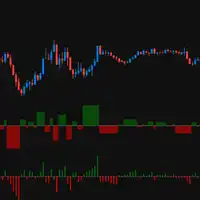
Common Trading Biases and Their Impact
Common Trading Biases:
Confirmation Bias: The tendency to seek out information that supports existing beliefs and ignore contradictory evidence.
Overconfidence Bias: Excessive confidence in one’s trading abilities, leading to taking on higher risks or ignoring proper risk management.
Loss Aversion Bias: The tendency to prefer avoiding losses over making gains, which can lead to holding onto losing trades for too long or exiting winning trades too early.
Anchoring Bias: Relying too heavily on initial information or reference points when making trading decisions.
Availability Bias: Giving more weight to recent or easily accessible information, leading to overlooking relevant historical data.
Impact:
These biases can cloud judgment and lead to irrational trading decisions.
Traders may miss out on profitable opportunities or incur unnecessary losses due to biased decision-making.
Biases can disrupt objective analysis and hinder the ability to adapt to changing market conditions.
Overcoming Fear and Greed in Trading
Methods:
Education and Self-Awareness: Understand the psychological aspects of fear and greed in trading and their impact on decision-making.
Risk Management: Implement proper risk management strategies to minimize fear-driven losses and control the urge for excessive gains.
Trading Plan and Rules: Develop a well-defined trading plan with predetermined entry and exit points to mitigate emotional decision-making.
Emotion Regulation Techniques: Practice mindfulness, deep breathing exercises, and positive self-talk to manage emotions during trading.
Analyze Past Mistakes: Review past trades to identify instances where fear or greed influenced decision-making and learn from those experiences.
Building a Disciplined Trading Routine
Steps:
- Define Trading Goals: Set clear and realistic trading goals aligned with your risk tolerance and trading strategy.
- Create a Trading Plan: Develop a detailed plan that includes entry and exit criteria, risk management rules, and trading strategies.
- Follow a Consistent Routine: Establish a regular trading schedule and stick to it, treating trading as a professional endeavor.
- Maintain a Trading Journal: Keep a record of trades, including reasons for entry/exit, emotions experienced, and lessons learned.
- Continuous Learning and Improvement: Stay updated on market developments, review and refine trading strategies, and seek feedback from experienced traders.
Developing Patience and Resilience
Methods:
- Understand Market Dynamics: Learn to accept that markets move in cycles and that not every opportunity will align with your trading strategy.
- Set Realistic Expectations: Avoid the desire for quick riches and acknowledge that trading success takes time and effort.
- Focus on the Process: Shift the focus from immediate outcomes to executing your trading plan effectively and making disciplined decisions.
- Practice Delayed Gratification: Avoid impulsive trading decisions and wait for high-probability setups that align with your trading strategy.
- Learn from Losses: Use losing trades as opportunities for growth, analyze the reasons behind them, and implement necessary adjustments.
Maintaining a Trading Journal for Performance Analysis
Benefits:
Track Performance: Keep a record of trades, including entry/exit points, timeframes, position sizes, and outcomes.
Identify Patterns: Analyze past trades to identify recurring patterns, strengths, and weaknesses in your trading approach.
Emotional Analysis: Document and assess emotional states during trades to identify potential biases or psychological factors affecting decision-making.
Performance Evaluation: Review trade data to assess the effectiveness of trading strategies, risk management, and overall performance.
Continuous Improvement: Use journal insights to make informed adjustments to your trading plan, refine strategies, and enhance decision-making.
Applications:
Maintaining a trading journal helps traders gain valuable insights into their performance, identify areas for improvement, and maintain accountability for their trading decisions. It serves as a valuable tool for ongoing learning and development.




